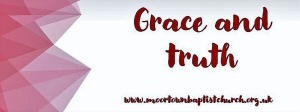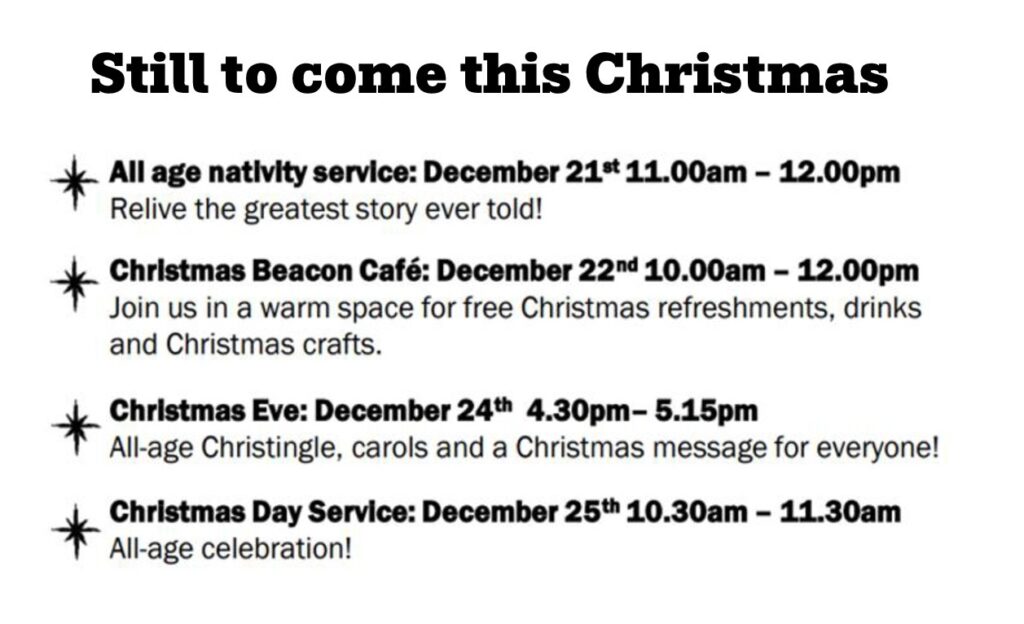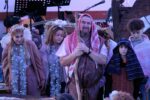Who, what, where and when? A guide to all that’s happening here at MBC

www.moortownbaptistchurch.org.uk
Following Jesus and serving the community
Lasting for just over an hour our Sunday Service starts in church and on YouTube at 11am. The first Sunday of each month is Café Church and on the third Sunday we celebrate Communion.
An important part of our weekly worship is Sunday School. Here a small group of young children learn all about Jesus and the love of God.
Rounding off Sunday we have Rock Solid. Meeting between 7 & 8pm and majoring around having fun, Rock Solid regularly sets our teenagers some serious and not so serious challenges and tasks.
Monday… Our free Warm Space Beacon Café, 10am to 12noon.
Tuesday… Stepping Stones, a toddler group 10 to 11.30am.
Tuesday… The first of our Housegroups, only this one is in church between 12noon and 2pm.
Wednesday… 10.30am – 2pm. Lunch Club, games, quizzes and always a hearty lunch for our seniors.
Wednesday… 7.30 to 9.30pm. Our hybrid Housegroup. With half the group meeting at church and the other half online.
Wednesday… 7.30pm – 9.30ish. Ladies Housegroup in the comfort of someone’s home.
Wednesday… 7.30 to 9pm. Country Dancing.
Thursday… 2pm to 4. Open Door Craft Group. Our second Warm Space of the week. No experience needed, Free refreshments and always lots of chat.
Thursday… 7pm to 9pm. Bible Study, in church.
Friday… 10am to 11am. A second Bible Study, again in church.
Friday… And finally, between 8pm – 10pm, another Housegroup, again in someone’s home.
In addition to all this we also host or provide a Pastoral Team, which without overstepping the mark provides confidential support to anyone who needs it, we host a Parkinson’s Exercise Class, two Extend Exercise Classes (ideal for our older friends), Pilates, Pathways, a Christian Counselling team, Leeds and Moortown Furniture Store, PACT (Neighbourhood Policing Teams) and local councillor surgeries. In addition, and particularly at certain times of the year we host special Services such as those associated with Easter, Nativities, Christingles, Baptisms, Mission weekends etc. etc.
For more information about Moortown Baptist Church please email
admin@moortownbaptistchurch.org.uk
Moortown Baptist Church. 204 King Lane, Leeds LS17 7AA
For just two weeks our online Newsletter is taking a break. But not before we’ve shown you these images from our wonderful Christingle Service
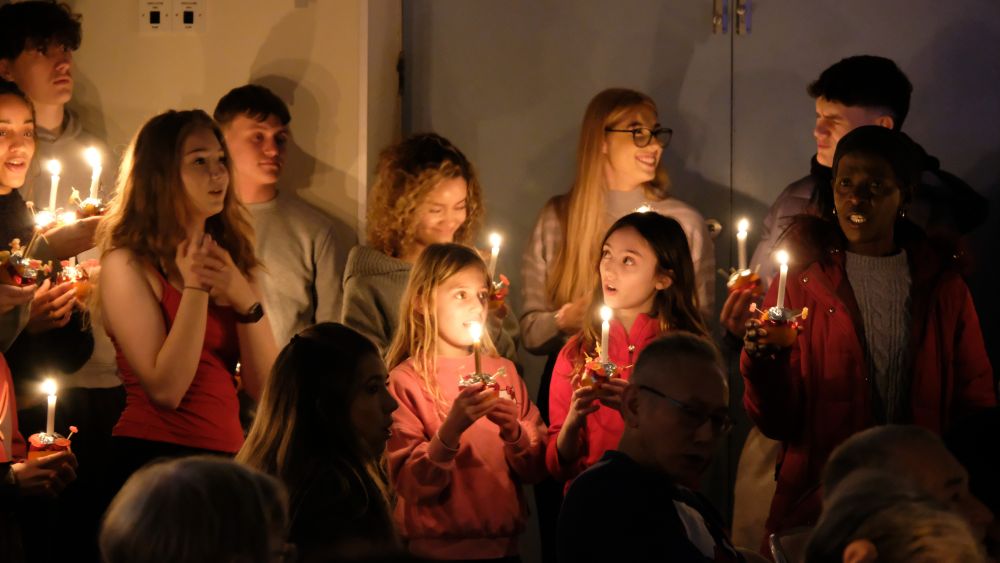
A bit like Santa, when it comes to the end of the year those of us that look after our Facebook page, our newsletter and the MBC website need a bit of a break.
That’s why between now and the second week in January, that’s week commencing January 11th, we’re having a digital detox.
That said, it would be remiss of us if we didn’t share these pictures with you that were taken this afternoon at today’s Christingle.
Happy Christmas everyone, see you in 2026.
Wow that really was some build up to Christmas 2025. Here’s our look back at Advent.
www.moortownbaptistchurch.org.uk
Right the way through Advent, MBC has either taken part in or hosted almost a dozen Christmas events.
From Kevin Sinfield’s 7 in 7 visit on the 7th of December through to today’s Christingle we have embraced a whole raft of events including: a wreath making workshop, Santa’s visit to our Stepping Stones party, a nativity that at times bore an amazing resemblance to a panto, Lunch Club’s Christmas dinner, carol singing in a local care home, Rock Solid’s end of term bash, umpteen Beacon Cafe’s and finally today a wonderful Christingle Service.
It goes without saying that each of these festive celebrations are available on the MBC website, in fact you can see a taster for each of them at the top of this post.
But stepping away from the website, and definitely closer to the true meaning of Christmas we have on every single day throughout Advent, put a special post on Facebook – many featuring pictures taken here at MBC.
Again you can see a selection of them in the gallery below.
So, with Advent now behind us all that’s left for us to say is please, please do come and join us at 10.30am tomorrow in church or on YouTube to celebrate Jesus’s birth.
Shelley’s Christmas message

Dear friends
We look forward to joining together in person and online as we share the story of the first Christmas together over the next few days. Tomorrow is the all-age nativity with carols so do come along and bring your friends and family. We’ll be lighting candle number 4 in our advent ring. On Monday everyone is welcome to bob into the Christmas café at Beacon with Christmas crafts for all ages! On Wednesday we join together for a candle lit all age Christingle service and on Thursday we celebrate Jesus birthday. We meet again together next Sunday for a short Christmas service together.
Sunday 21st December All Age nativity with carols Advent 4: Love 11-12 midday.
Monday 22nd December All age Christmas Beacon and warm welcome space with Christmas crafts and Christmas snacks from 10-12 midday.
The funeral of Micheal Riches will take place at 1pm in the Sanctuary followed by refreshments in church. All those who would like to go are welcome. The family are encouraging those going to wear red and green.
Wednesday 24th December 4.30-5.15pm All Age candle lit Christingle Service with carols
Thursday 25th December 10.30-11.30am All Age Christmas Day Service (note the slightly earlier start!) Bring a present to open or show!
Sunday 28th December 11-11.45 All age service together ‘Wonder part 5’
No Beacon café, stepping stones, lunch club or craft group during the week of the 29th December.
Sunday 4th January New year café church ‘Star of wonder Part 6’
Groups begin again this week including Beacon café, craft group, lunch club, Stepping Stones and house groups/bible studies.
There are a few ‘wonder’ cards left in church so do pick some up to give out this week!
The card is also available online at www.moortownbaptistchurch.org.uk Please come and support us as we open the doors to many who don’t usually come to the church building. Our services have also been advertised online.
An advent ‘thought for the day’ is going out every day on our Facebook page each day so do have a look and share the journey. The website is updated with all the new stories of the week as well as some articles written by people in the church. We share many of these on social media too across our local communities.
Thankyou to all those who came along last week and supported in all sorts of ways from the carol singing, wreath making, children and youth Christmas parties, lunchclub Christmas and all those who are supporting our activities in prayer. Hampers have kindly been put together from all your wonderful donations and the beacon team and staff will be helping to give these out on Monday and throughout next week. Many of our housegroups and bible studies have finished for a small break, but we want to thank all those who contribute and share in these throughout the year as they are such an important part of discipleship and fellowship.
We continue to pray and visit those who are unwell at the moment, and we miss those who haven’t been able to join in some of the fellowship in person due to illness or bereavement. We know the church is the people, so do keep in touch with each other and continue to let us know if people might benefit from prayer, support or a visit. Equally if there is something you want to get involved in then do let us know. If you can’t find myself or a group leader, then do send a message to Lesley to pass on.
Many blessings
Shelley
Shelley Dring
Minister
Moortown Baptist Church
As predicted today’s nativity service was as comical as it was meaningful

You’d think by now, that after all these years of trying that just once in a while we’d get the nativity story right.
Now, don’t get me wrong. Yes we manage to tell the story in the correct order, and more or less on cue our angels, shepherds, sheep and wise men each acted out their parts as best they could.
However, and here I’m not naming names but whoever it was that was in charge of central casting had forgotten one vital component… they’d neglected to recruit someone to play Mary!
Fortunately following a fair bit of cajolling from the congregation someone did eventually step up and with much aplomb took on this not insignificant part.
In the end, as always, Jesus was born, everyone congratulated each other on managing to blag their way through another production and following a hearty rendition of Oh Come all ye Faithful the costumes were packed away until next year.
Season’s greetings from a very Christmassy Lunch Club
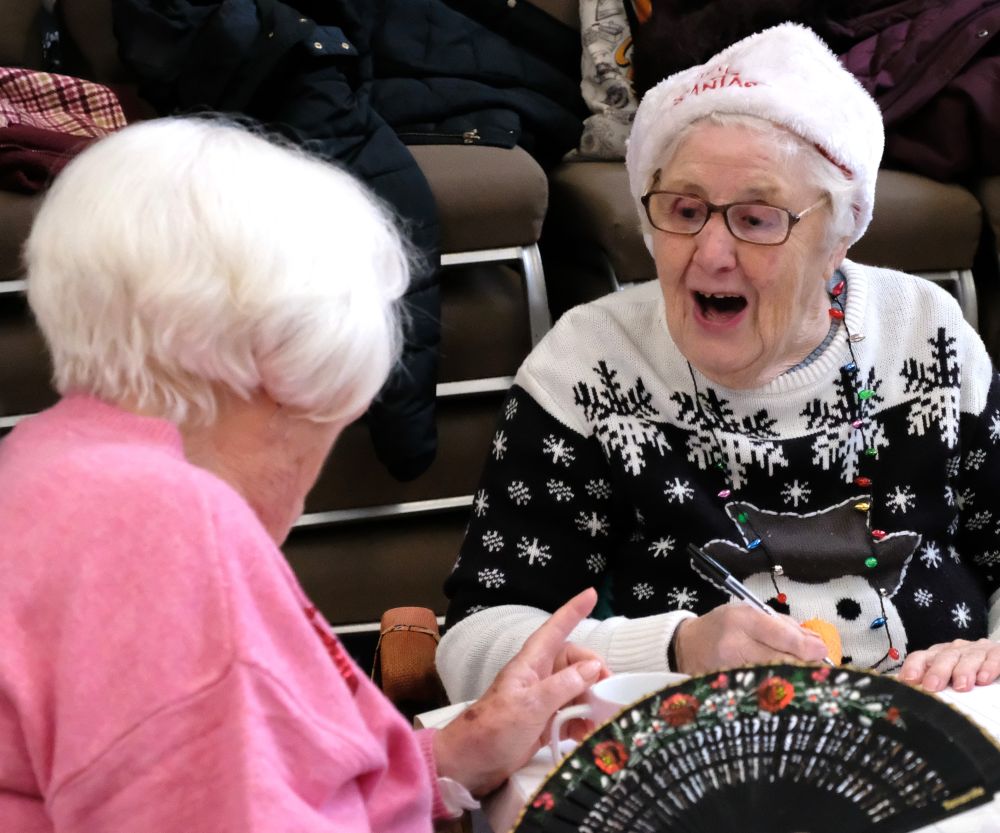
Whoever it was that first coined the phrase “act your age not your shoe size” clearly didn’t have MBC’s Lunch Club in mind. Then again maybe they did, but if so, had they taken any notice of him or her today’s Christmas Lunch Club would have been a much more dowdy affair than it was.
With Christmas jumpers, hats and trees, reindeer ears and even flashing lights all adding to the already joyful mood, the balance of seasonal quizzes and carols rounded off with a wonderful lunch was absolutely top notch.
It’s sometimes all too easy to forget just what a blessing Lunch Club is to many of our Seniors. As one said to me this morning “If it wasn’t for Rachel and the team, life would be a real struggle. Thank God that at least once a week I get to come here and meet up with my friends.
The holly and the ivy, not forgetting the baubles the bangles and the beads combine to make our wreath making workshop a huge success

There are few events that can bring together two, three, or possibly even four generations quite like MBC’s annual wreath making workshop. But once again that’s precisely what happened here at Moortown last Sunday.
Starting with exactly the same raw material (that’s with a round twelve inch mossy covered frame) and with exactly the same choice of decorations to choose from (fern, holly, dried fruit and red berries etc) the forty or so enthusiasts that joined us not only had the time of their lives but designed some really fantastic creations.
To witness the expertise with which our visitors handled their secuteres, and to marvel at their speed as they bound their growing designs with near invisible wire was truly amazing.
Well done to you all, particularly to those of you that staged it.
#community
From carolling in a care home to our very own Rock Solid party MBC spreads some Christmas cheer
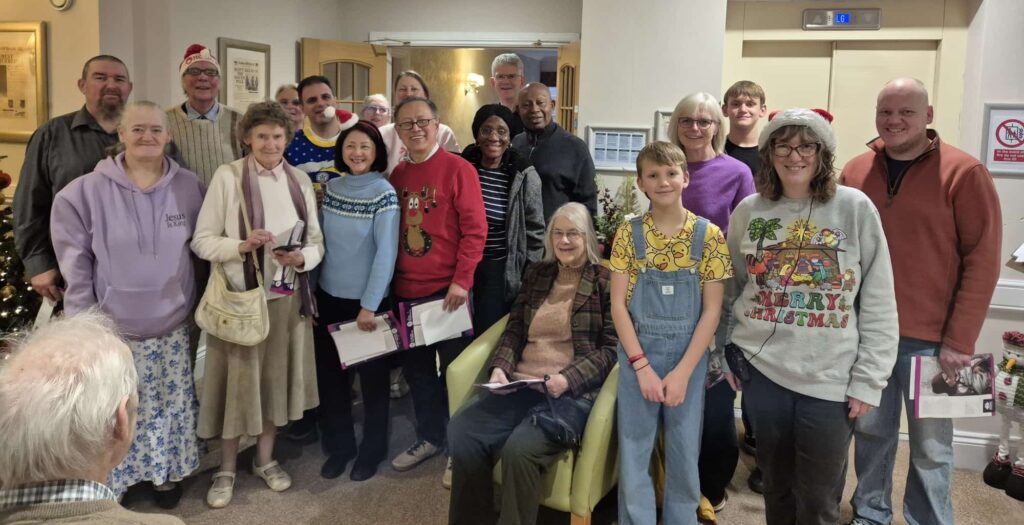
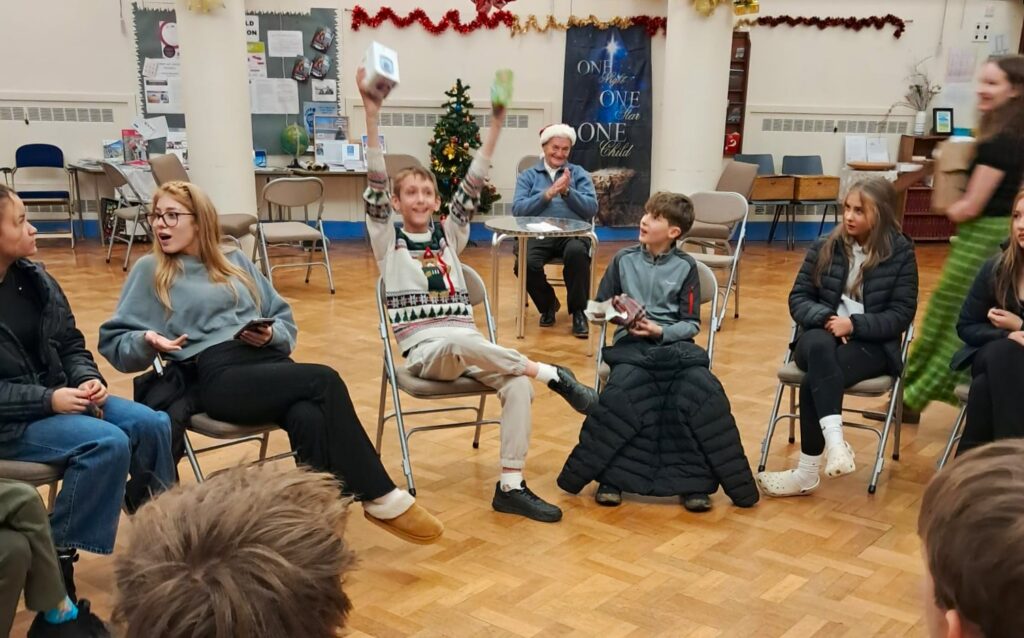
For the residents of Grove Park Care Home in Meanwood a recent visit from a group of carol singers from MBC was we would hope the perfect way to prepare for Christmas.
Our choristers, young and old returned full of praise and enthusiasm, even reporting that they had been invited back to Grove Park next year.
Later that same day it was also the time for our Rock Solid youngsters to party. Adam Argyle who is a member of the team, tells me that they played some good “old fashioned” games such as pass the parcel and word search, and there was of course the customary pizza.
All in all you could say that this last Sunday, like the previous one, when during our community Christmas Cafe we hosted Kevin Sinfield and his team on the last leg of their 7 in 7 Together challenge MBC is now well and truly in the mood.
Christmas hampers all set to go


There’s an extra bonus awaiting MBC’s Lord’s Pantry regulars next week; hampers containing a selection of Christmas goodies, toys and toiletries.
Made up by the team at last Monday’s Beacon Cafe, it’s our sincere hope that whilst they may not be all you wish for, these small tokens of our love show just how much we care.
